R. A. Snively Designs Richmond, Indiana
1940 FORD CONVERTIBLE
SEAT REUPHOLSTERY
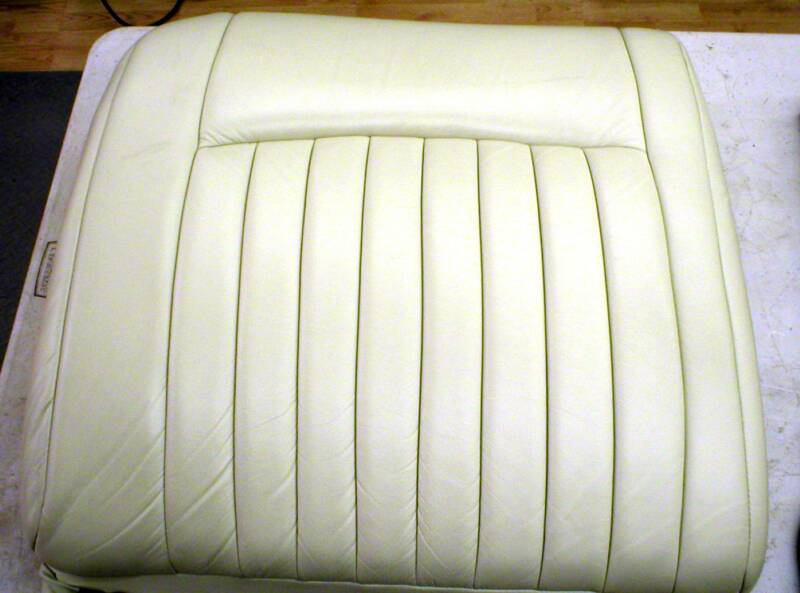
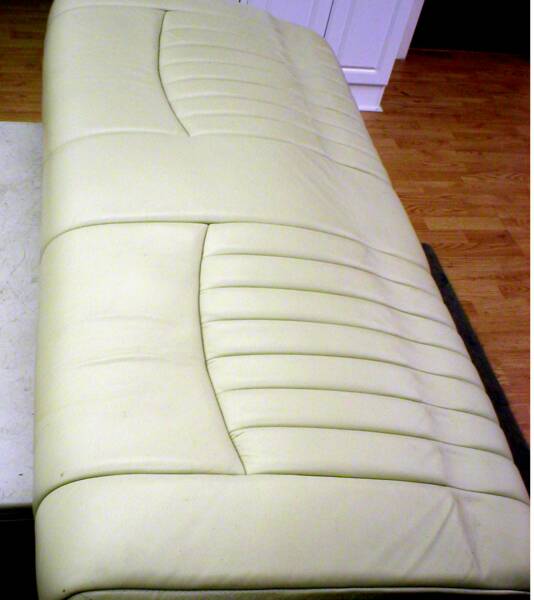
Although the interior was only three years old, it had already started showing some stress areas due to the poor support that cannot be seen until it was "opened up". Here, the right front seat backrest (above) and the rear seat cushion (left) await the initial disassembly. The overall appearance of the ivory colored leather looks satisfactory, but wait until you see what one Florida trimmer did to provide a "custom street rod interior. "
This detail is the rear seat cushion frame and spring assembly. It became immediately evident, once the upholstery was beginning to get removed, that the original seat frame had rotted away and a piece of lumber was attached to the remains of the assembly so an attachment of upholstery could be established by the previous trimmer. The 68-year-old seat springs and their rotted muslin wrap are still here and in bad shape. The car owner had no idea this existed in his car!
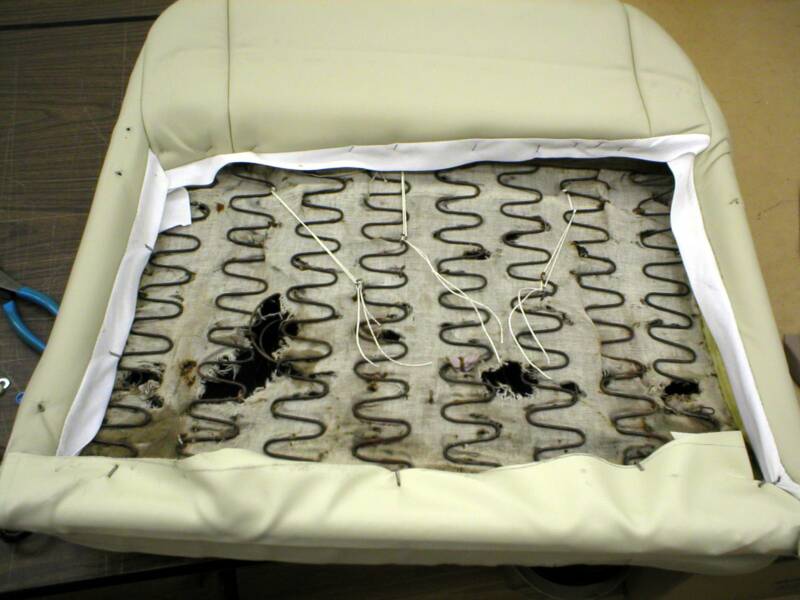
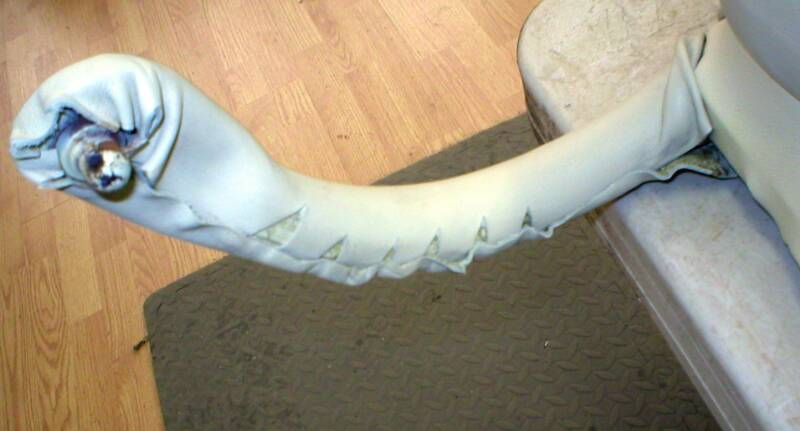
The front seat backrests posed an interesting challenge since the original sheetmetal support arm covers were missing. Instead of fixing the problem, the previous trimmer decided to cover the support arm with leather and let the backrests lean against the rear quarter trim panels! All of this had to be addressed before upholstery could be patterned and installed.
Disassembly
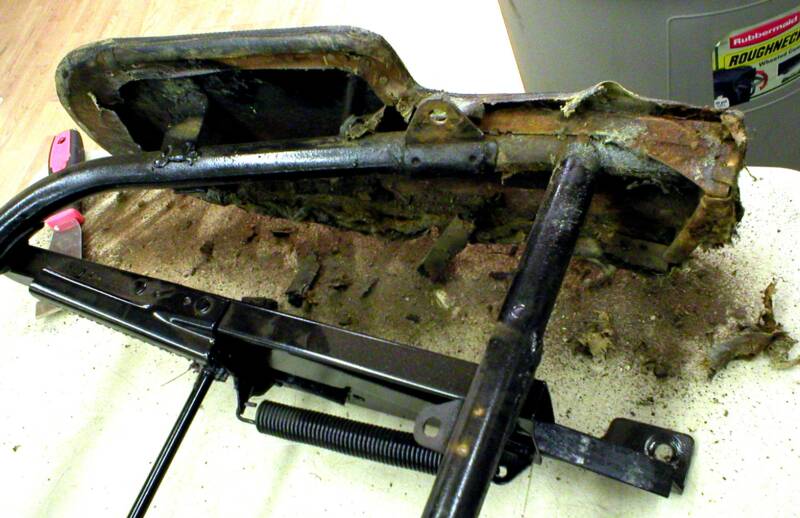
This is the front seat tubular frame and the "shell" that is part of the original design of the seat. When Bob removed the ivory leather, he found the original 68-year-old oil cloth, thin pad, and RUST under it. Bob said even he was surprised to see this type of workmanship in today's trade.
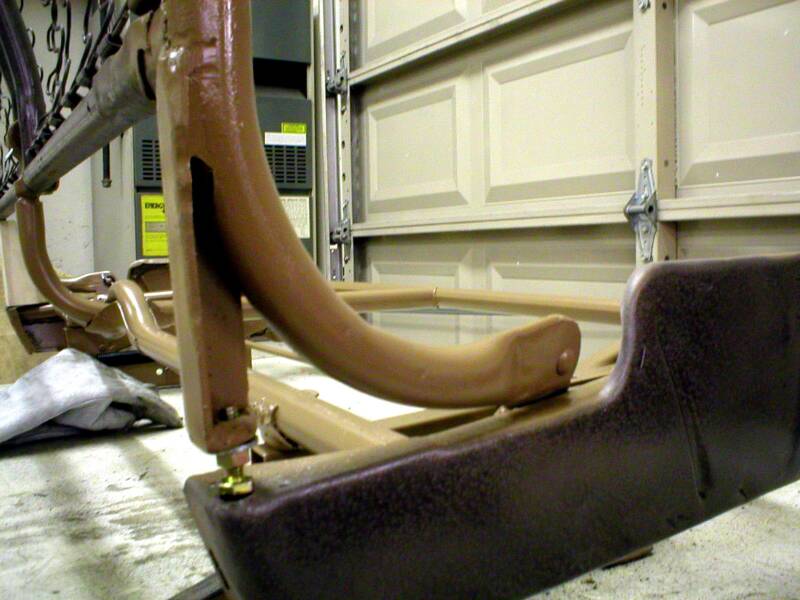
The Front Seat Backrest Support
Once the front seat frame received a complete sandblasting, priming, and painting, the backrests support stops were made from angle iron and were welded into place. The picture above depicts the finished product. Bob added an adjustable bolt with jam nut so the alignment of each backrest can be "fine tuned". A cover formed from ABS plastic (shown above right) was hand-made and installed to replicate the missing original sheet metal. It's now all coming together and the car's owner will be able to enjoy proper backrest support on those long drives through the countryside!
Seat Coil Spring Replacement
Once Bob assessed the dire condition of the original seat coil spring units, it was decided to replace all of them with today's better technology of High Resiliency (HR) foam. The cushions would require 5" thick units and the backrests would be 3"thick units. High-grade 1/2" plywood would become the base for the units. The original front seat tubular steel frame would be reused and the rear seat would be an all new construction.
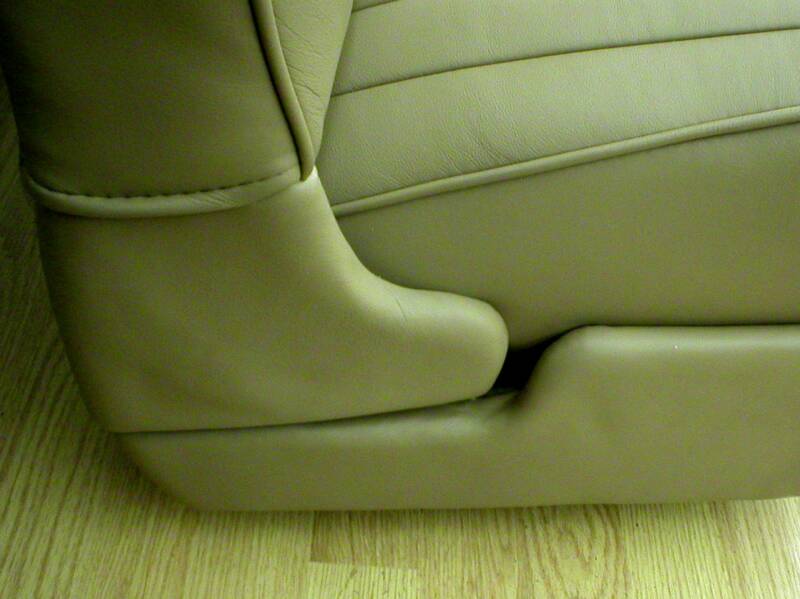
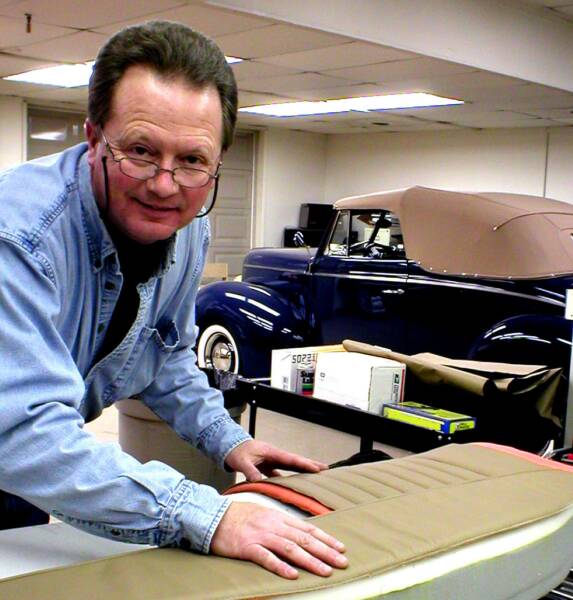
This picture shows Bob working on the Ford's rear seat backrest leather upholstery. The new H-R foam unit can be seen in the lower portion of the picture.
Bob prides himself on careful pattern-making so the seats look as though they are custom reupholstered original units.
He says " it's the subtle touches that go undetected that make true craftsmanship an artform."
Reassembly